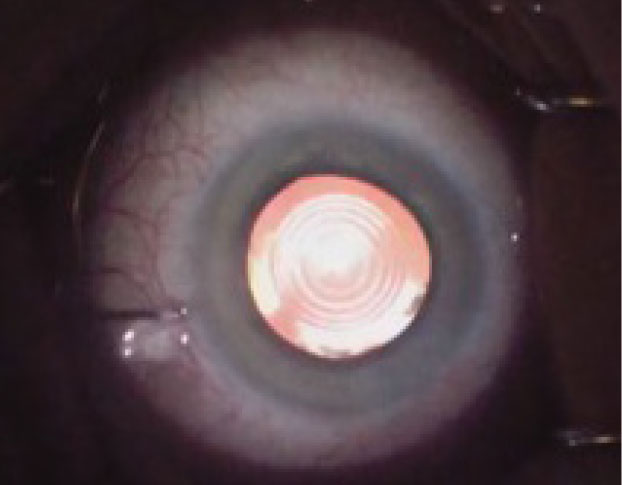 |  |
There’s always a catch when discussing cataract surgery with a patient who wants to be “glasses-free.” Despite the success of today’s multifocal intraocular lenses (IOLs), some patients may still need glasses. Avid readers or those who rely on computers may find even a premium IOL’s range lacking. With its approval earlier this year, the AcrySof IQ PanOptix (Alcon) is the latest IOL trying to help patients put away their readers for good. The lens is designed to extend the range of near and intermediate vision without sacrificing distance vision.
Lens Details
The PanOptix is a biconvex acrylic lens that uses diffractive optics in its central 4.5mm to create an intermediate focal point of 60.0cm (+1.65D) and a near point of 40.0cm (+2.35D). The lens filters UV and blue light and includes negative aberrations on its anterior surface to counteract the positive aberrations of the cornea.1 Alcon’s technology, which focuses 88% of the light on the retina, even in a 3.0mm pupil, is designed to provide a crisp image independent of pupil size.2 The toric implant can correct up to 2.82D of corneal astigmatism.1
Research Findings
While under investigation, researchers measured uncorrected binocular vision at the six-month follow up for 256 eyes that received the PanOptix and found 92% of patients saw 20/25 or better at distance, 94% at 66.0cm and 91% at 40.0cm.1 In a small study of various lens designs, the PanOptix achieved near vision of 20/32+.3
 |
| Most patients (94%) are very satisfied with the new PanOptix trifocal IOL. Click image to enlarge. |
Researchers also compared the PanOptix with the Restor IOL (Alcon) “blend,” which uses a +2.5D lens in the dominant eye and +3.0D in the other to enhance intermediate vision. They found uncorrected binocular distance acuity was 20/20 with PanOptix and 20/25 with Restor. Intermediate acuities were 20/25 and 20/32, while near vision measured 20/20 and 20/25, respectively.4
When surveyed on visual satisfaction, 94% of patients were “very satisfied,” 98% would recommend the lens and 99% would choose the PanOptix lens again if they had a choice.1 In response to how often they needed glasses, 81% of patients answered “never” for distance, 94% for arm’s length and 84% for near.
Although the visual acuities and contentment are promising, the study’s exclusion criteria included conditions such as iritis, glaucoma and previous refractive surgery. Complaints of glare and halos were minimal—only 4.8% of patients were symptomatic at six months. While 13% showed posterior opacification at six months, the study did not include whether Nd:YAG capsulotomy was necessary.1 As use of PanOptix grows, we will see longer-term data and a more realistic expectation for patients excluded from the first investigation.
The enhanced visual acuities achieved with the trifocal make for an exciting option for patients. Still, this lens is not a cure-all and should be avoided in patients who are sensitive to glare or have macular disease or untreated ocular surface disease. In addition, patients can expect a premium IOL charge. Educating patients on this new option can help them make an informed decision that might increase their quality of life.
Katherine Rachon practices at Virginia Eye Consultants, a referral-based tertiary care center in Norfolk, VA.
1. U.S. Food and Drug Administration. Alcon Laboratories, Inc. AcrySof IQ PanOptix trifocal intraocular lens and AcrySof IQ PanOptix toric trifocal intraocular lens. www.fda.gov/medical-devices/recently-approved-devices/alcon-laboratories-inc-acrysofr-iq-panoptixr-trifocal-intraocular-lens-model-tfnt00-and-acrysofr-iq. Accessed November 4, 2019. 2. Kohnen T. First implantation of a diffractive quadrafocal (trifocal) intraocular lens. J Cataract Refract Surg. 2015;41(10):2330-32. 3. Escandón-García S, Ribeiro FJ, McAlinden C, et al. Through-focus vision performance and light disturbances of 3 new intraocular lenses for presbyopia correction. J Ophthalmol. 2018;2018:6165493. 4. Vilar C, Hida W, Lins de Medeiros A, et al. Comparison between bilateral implantation of a trifocal intraocular lens and blended implantation of two bifocal intraocular lenses. Clin Ophthalmol. 2017 Aug;11:1393-97. |

